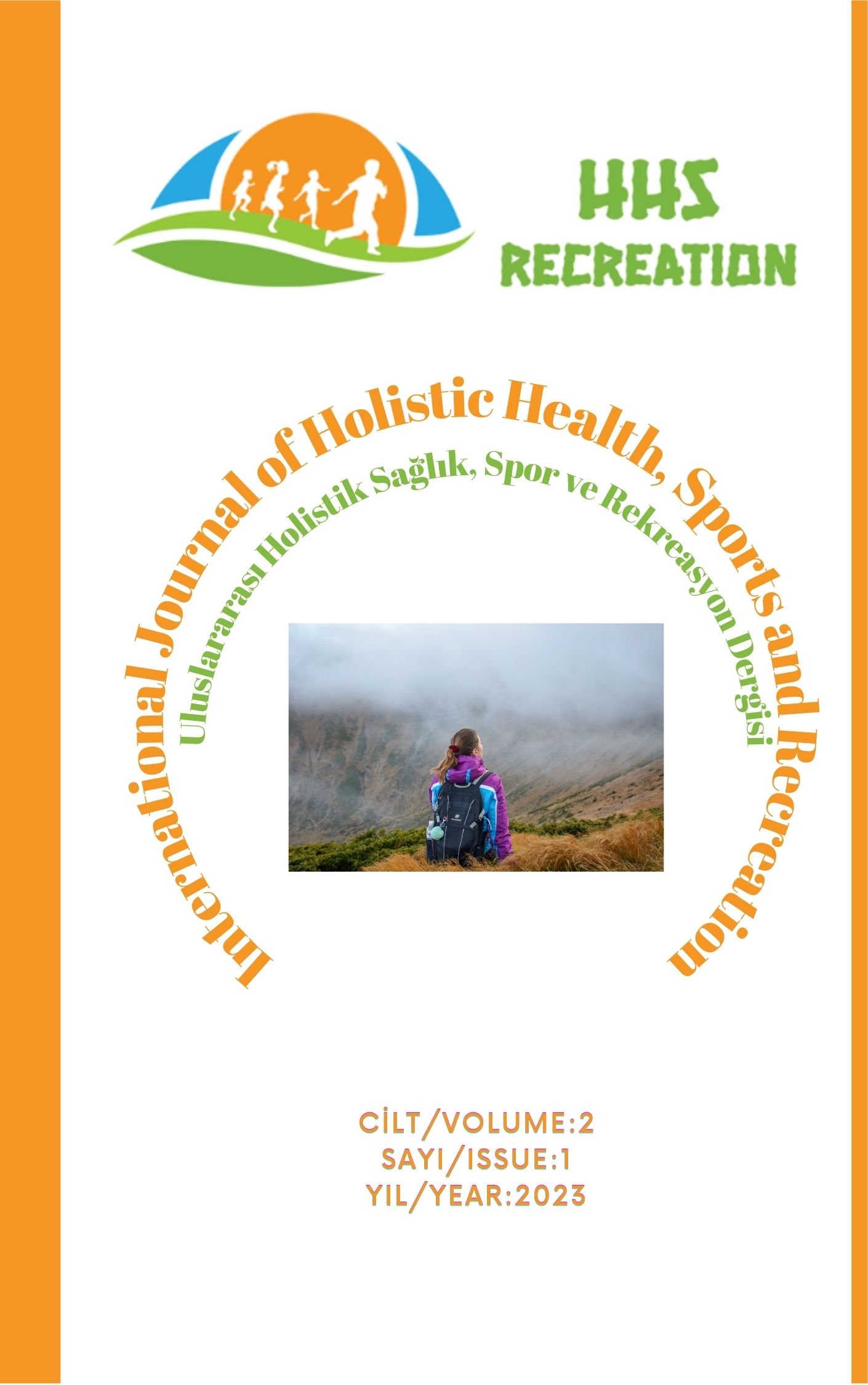The Effect of The New Overtime System In Football On The Performance and Technical Parameters of The Teams
DOI:
https://doi.org/10.5281/zenodo.8007883Keywords:
Football, match, world cup, match analysisAbstract
The aim of this study is to examine the effect of the new overtime system, which was started to be used with the 2022 World Cup and aims to add all of the ball out minutes to the end of the half, on the performance and technical parameters of the winning and losing teams in the world cup. In the tournament, 49 matches played in the group stage and after the group, whose normal time did not end in a draw, were discussed. The data used in the study were obtained from the official website of FIFA https://www.fifa.com. Statistical analysis of the obtained data was made with the IBM SPSS Statistics 24 package program. The determination of whether the data are suitable for normal distribution was made with the Shapiro Wilk test and it was observed that the data were normally distributed. According to this result, Independent Sample T test, which is one of the parametric tests, was applied in independent groups. According to the statistical results obtained, there was a significant difference between the two groups in the parameters of goals scored and shot on target (p<0.05). There was no significant difference between the two groups in passing, successful passing, ball handling, distance covered and high-intensity running parameters. As a result, it was determined that the teams in the matchs had close averages in the specified parameters, but the winning teams had higher averages of hits and goals. It can be said that the winning rate of the teams that shoot more in the matchs is higher. The fact that there is no significant difference in the total distance and high-intensity running between the teams can be interpreted as the tactically correct area and time should be covered on the basis of the team. In addition, the fact that the ball playing and passing parameters do not differ significantly can be interpreted as the teams playing the ball a lot or passing the ball a lot more result-oriented and passing more effectively.
References
Akgeyik, T. (2018). Futbolda Başarıyı Etkileyen Faktörler, (Türkiye Süper Lig Takımları Üzerine Ampirik Bir Araştırma). HAK-İŞ Uluslararası Emek Ve Toplum Dergisi. 7(18), 396-413.
Bakır, İ. (2007). Türkiye Süper Ligi’nde Mücadele Eden Bir Futbol Takımının İç Saha Ve Dış Sahalarda Yaptığı Maçların Analiz Sonuçlarının Karşılaştırılması. Ankara Üniversitesi, Sağlık Bilimleri Enstitüsü, Beden Eğitimi Ve Spor Anabilim Dalı, Yüksek Lisans Tezi, Ankara
Bilgin, S. ve Müniroğlu, R.S. (2002). 2018 DÜNYA KUPASI MAÇLARININ TEKNİK, TAKTİK VE HAREKET ZAMAN İLİŞKİSİNİN İSTATİSTİKSEL ANALİZİ. SPORMETRE Beden Eğitimi Ve Spor Bilimleri Dergisi. 20(2), 105-116.
Bordonau UL, Monforte C, Guzmán JF, and Villanueva A (2013). Offensive And Defensive Team Performance: Relation To Successful And Unsuccessful Participation İn The 2010 Soccer World Cup. Journal Of Human Sport And Exercıse. 8(4):894-904.
Carling, C., Bloomfield, J., Nelsen, L., and Reilly, T. (2008). The Role Of Motion Analysis İn Elite Soccer. Sports Med. 38(10),839‐862.
Castellano, J., Casamichana, D., and Lago, C. (2012). The Use Of Match Statistics That Discriminate Between Successful And Unsuccessful Soccer Teams. Journal Of Human Kinetics. 31,139-147.
Collet, C. (2012). The Possession Game? A Comparative Analysis Of Ball Retention And Team Success İn European And İnternational Football. Journal Ofsports Sciences. 31:2 123136.
Franks, I.M., and Hughes, M. (2016). Successful Coachıng Through Match Analysıs. Meyer And Meyer Sport. 1nd Ed.
Gürkan, O., ve Müniroğlu, S. (2018). 2016 Avrupa Futbol Şampiyonasındaki Müsabakaların Teknik-Taktik Açıdan Analizi. Spormetre. 16(3),101-108.
Hughes, M., and Franks, I. (2005). Analysis Of Passing Sequences, Shots And Goals İn Soccer. J Sport Sci. 23(5),509‐514.
Lepschy, H., Wäsche, H., and Woll, A. (2020). Success Factors İn Football: An Analysis Of The German Bundesliga. Int. J. Perform. Anal. Sport 20, 150–164. Doi: 10.1080/24748668.2020.1726157
Liu H, Gomez MA, Penas CL, and Sampaio J. (2015). Match Statistics Related To Winning İn The Group Stage Of 2014 Brazil Fıfa World Cup. Journal Of Sports Sciences. 33(12):1205-1213.
Müniroğlu, S., ve Deliceoğlu, G. (2008). Futbolda Müsabaka Analizi Ve Gözlem Teknikleri. Ankara Üniversitesi Basımevi. 1. Baskı. Ankara.
Peñas, L.C., Ballesteros, L.J., and Rey, E. (2011). Differences İn Performance İndicators Between Winning And Losing Teams İn The UEFA Champions League. Journal Of Human Kinetics. 27(1), 135-146.
Rumpf, C.,M., Silva, R J., Maxime, H., Farooq, A., and Nassis, G. (2017). Technical And Physical Analysis Of The 2014 FIFA World Cup Brazil: Winners Vs. Losers. The Journal Of Sports Medicine And Physical Fitness. 57(10), 1-15.
Sgro, F., Barresı, M., and Lıpoma, M. (2015). The Analysis Of Discriminant Factors Related To Team Match Performances In The 2012 European Football Championship. Journal Of Physical Education And Sport. 15(3),460-465.
Szwarc, A. (2004). Effectiveness Of Brazilian And German Teams And The Teams Defeated By Them During The 17th Fifa World Cup. Kinesiology. 1,83-89.
Yue Z, Broich H, and Mester J. (2014). Statistical Analysis For The Soccer Matches Of The First Bundesliga. International Journal Of Sports Science And Coaching. 9(3):553-560.
Downloads
Published
How to Cite
Issue
Section
License
Copyright (c) 2023 International Journal of Holistic Health, Sports and Recreation

This work is licensed under a Creative Commons Attribution 4.0 International License.



